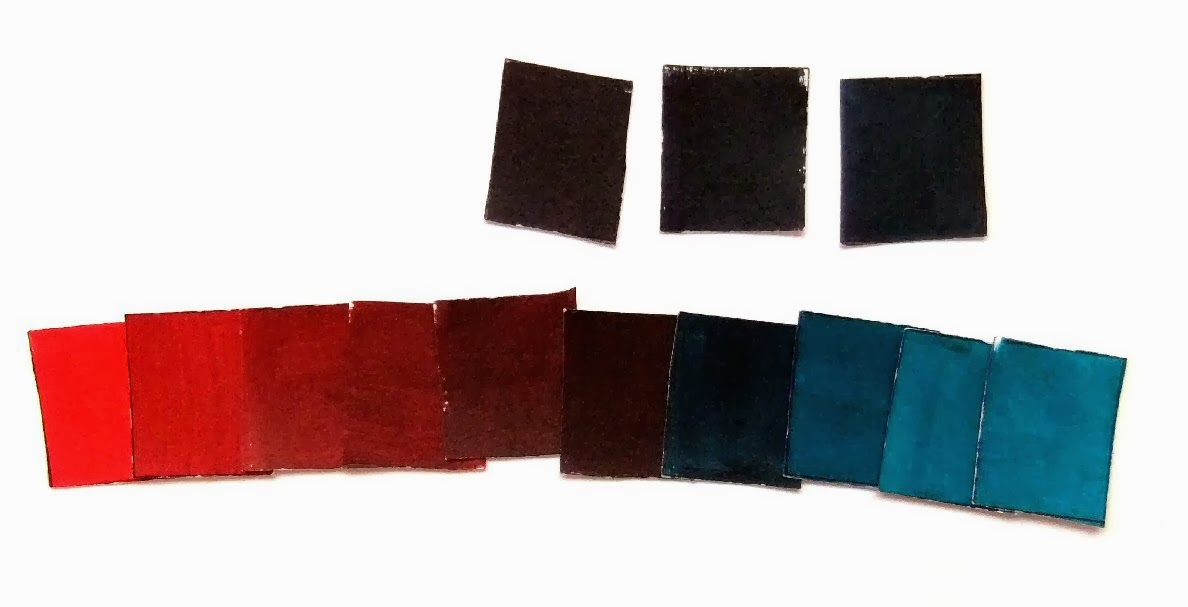It is February 18 and I am revising this post. I'm still trying to clarify what I am saying in my own mind. I probably will revise this again. Thank you, Far Side of Fifty, for your input. I realize the original post was as clear as mud...generally a very deep value in this part of Ohio.
Value is an important aspect of color. I have read many places that a painter can use colors that have no relation to the actual subject but if the values are correct, the painting will seem "right". I've chosen to select complementary colors to simplify the color choices. I noticed when I started looking closely at complements that while they are always opposite one another on the color wheel, their values can be similar or very different.
Let's start with a gray scale. This is the eleven step one that I made. If I leave off the first square which is white, the scale is one that is commercially available in a number of different forms, ten steps with 10 percent gradations.
Cadmium Red Medium and Pthalo Green are above and below I have turned them to gray using the computer. You can see that they are very close in value.
The entire range of Cadmuim Red Medium to Black to Pthalo Green tends to be filled with values from midway toward the black range on a value scale.
If you paint a picture or decorate a room using this red and green, chances are you will want to add a third color with a paler value or add white to the red and /or green.
.Here are portions of the same scale, Cadmium Red Medium to a mixed black using Pthalo Blue.
Here is the other side, Pthalo Blue to black.
Let's look at Cadmium Yellow Light and Dioxazine Purple, two other complementary colors.
Here they are in gray scale.
This time the complementary colors vary widely in value.
And the resulting value scale looks much different from the Cadmium Red Medium to Pthalo Green scale. A lot of dabs of purple can be mixed into yellow to make various values before the mixer arrives at black.
Here is the Cadmium Yellow Light side as it progresses to black.
Here is the Dioxazine Purple to black side. It doesn't take near as much yellow to change purple to black.
With this complementary choice, a picture could be painted without using white or another color and there would be a wide variety of values.
There are many more complementary color combinations. Each one has its own characteristics. And one of the characteristics that varies is value as one complementary color mixed with its opposite moves toward black.













































